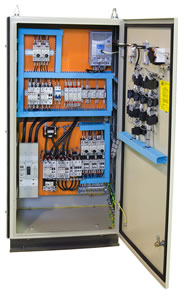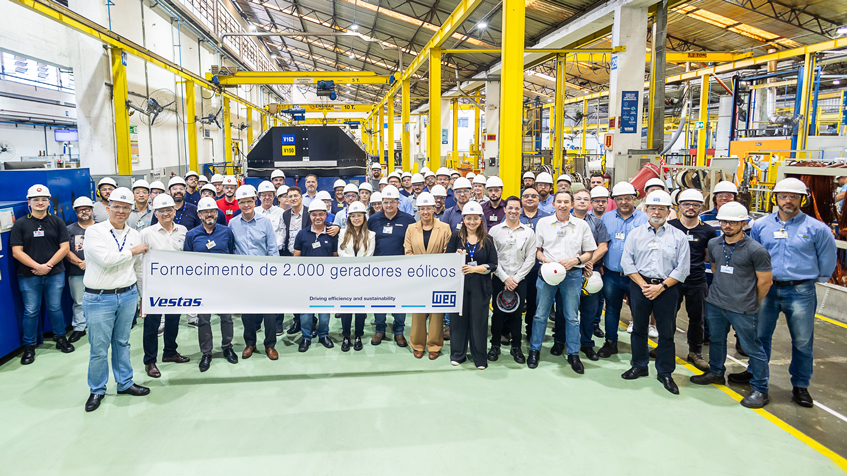In a joint venture the company Lippel produces the machine and WEG the control panel to manufacture systems that compress and pelletize industrial residues for using as fuel. Peanut shells, rice chaff, straw, sawdust and sugarcane bagasse are a few of the waste products changed into pellets, a solid and environment friendly biofuel with a high heating capacity which substitutes burning firewood.
Designed specifically for the application and compact in size the control panels of the pellet production systems were developed by WEG Automation to meet the needs of Lippel, providing standardization of the product, speed in service, technical support, training and constant improvement.
For Samoel Zilse executive manager of Lippel, the partnership with WEG has become a reference for the company. “With the WEG control panels we have had a considerable improvement in the quality of the product as well as in the cost and standardization. WEG also offer services to our customers in the constant search for feasible solutions”, adds Zilse.
According to Manfred Johann, Sales Manager of the Customized Starters section of the WEG Automation unit, to customize and deliver to the customer what it is he needs is a WEG characteristic. “We have a team to analyze the needs of each customer, developing, changing or adapting solutions”, he comments.
The pellets are used by several segments such as pizza restaurants, hospitals, homes and industries. They are easy to store and replace fossil fuel which in turn brings great advantages to the environment.
Advantages in the use of pellets
There are many advantages in the use of pellets as fuel to generate heat and steam. Considered to be a clean source of energy, they have the lowest pollution rate in comparison to other fuels. They are also a renewable source of energy because they are made of vegetable residues which greatly contribute to keeping the environment clean. They do not contain preservatives, chemical products, additives or glues and don’t emit toxic smoke or have odor.

Pellets can be used for burning in the same way as firewood. When a ton of pellets is burned, not only does this not release carbon into the atmosphere, it also helps in the preservation of ten trees (6 m high and 1,6 m of circumference round the trunk). These trees continue to remove CO2 from the air through photosynthesis which helps to avoid impacts on the environment. Each one of these trees absorbs an average 22 kg of CO2 per day. The use of pellets in place of fossil fuel is encouraged by the Brazilian government and can represent up to 60% in energy savings.
Comparative of fuels
Relative quantity of fuel for the production of 18.5 MBTUs. One MBTU is equal to 252,000 Kcal.
| Pellets | Firewood | Green chips | BPF Oil 1A | GPP | Natural gas |
| 1 ton | 2 tons | 2,3 tons | 500Kg | 404 Kg | 510 Kg |
The control panels of the pellet production systems were developed by WEG to meet the needs of Lippel, providing standardization of the product, speed in service, technical support, training and constant improvement.


